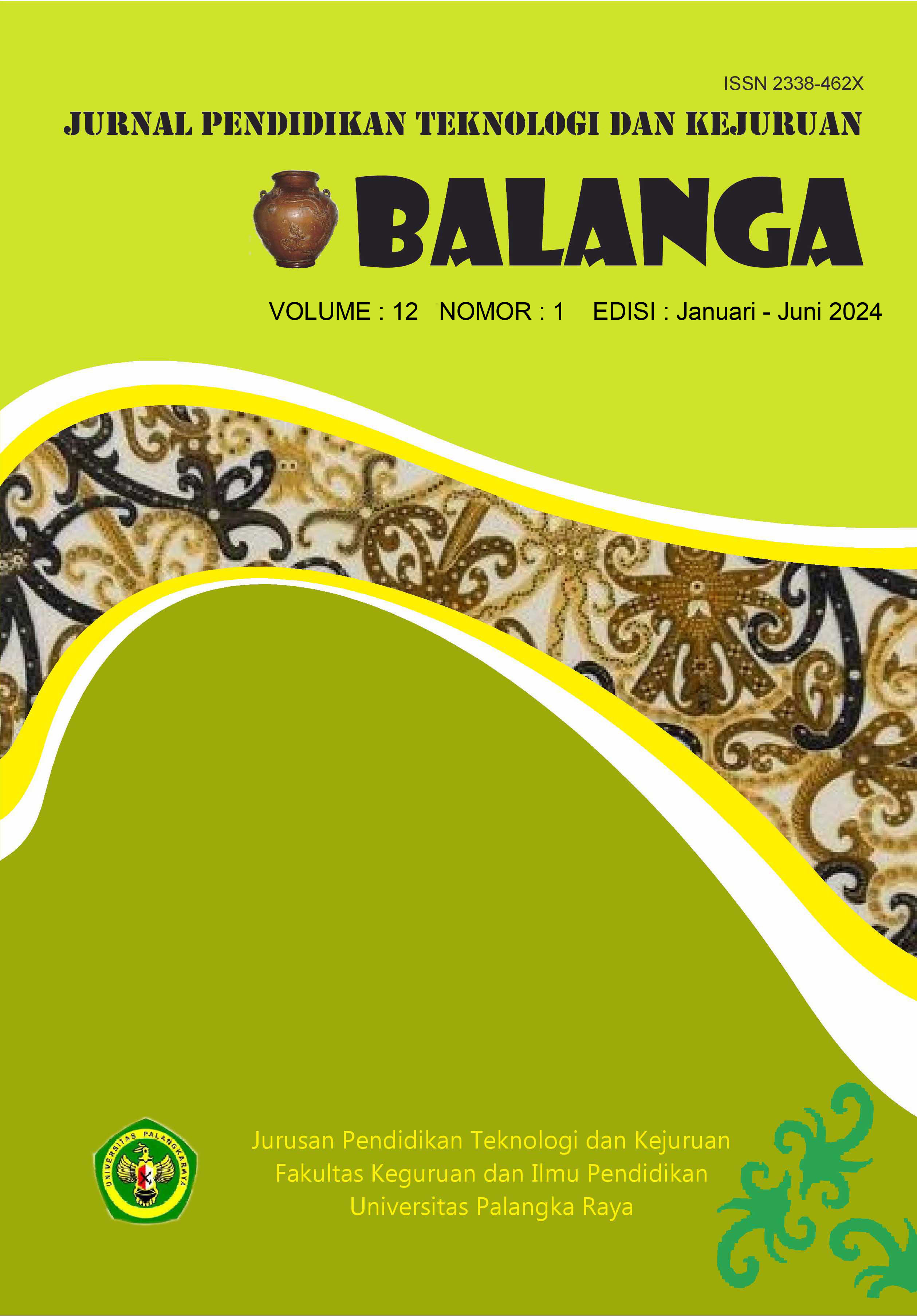DESIGN OF BIOMASS FUEL AS ENERGY
DOI:
https://doi.org/10.37304/balanga.v12i1.14787Keywords:
Biomass waste, Stove design, Stove bottom plateAbstract
Biomass waste from wood carpentry, which amounts to 15-20% of the woody biomass used, is still not fully utilized. Meanwhile, the biomass can be utilized as a renewable energy source derived from natural materials. The design of energy utilization from biomass waste as an alternative energy source for cooking is a simple utilization effort that can be done by the community. So on the stove design to utilize this waste wood chip biomass is done semi-closed combustion with a limited amount of air entry, so that the heat calorie fire stove that occurs will come out centrally on the hole above the stove. So the selected research topic is the way of utilization of wood chip waste biomass into alternative energy sources for cooking needs. The purpose of this research is to get the design of the utilization of biomass waste (wood chips) as an alternative energy source for cooking. The treatment in this study is the number of holes on the bottom plate of the stove, namely: A has 3 holes, B has 4 holes, C has 5 holes, and D has 6 holes. Based on the result of the analysis of variance (ANOVA), it is seen that the value of F- count is much bigger than the F-Table value either 5% or 1%, so Ho will be rejected and receive H1. This means that the treatment of the number of holes on the plate under the design of the biomass waste stove (wood chips) as a fuel gives a very real effect of its ability in the heat achievement to boil test water as much as 1 liter in the test pan. The treatment which gives effect and different from all other treatments is the D treatment with 6 holes on the bottom plate of the stove, which has a larger LSD value for 1%, but for the C treatment with 5 holes on the bottom plate of the stove is only different at the 5% level. While for treatment C to treatment A and B only differ on level of 5% only. The conclusion of this study is that the best stove design is D treatment, with a faster flame stabilized with a more perfect combustion process and leaving only a small amount of charcoal.
Downloads
Downloads
Published
Issue
Section
License
Copyright (c) 2024 BALANGA: Jurnal Pendidikan Teknologi dan Kejuruan

This work is licensed under a Creative Commons Attribution 4.0 International License.






























